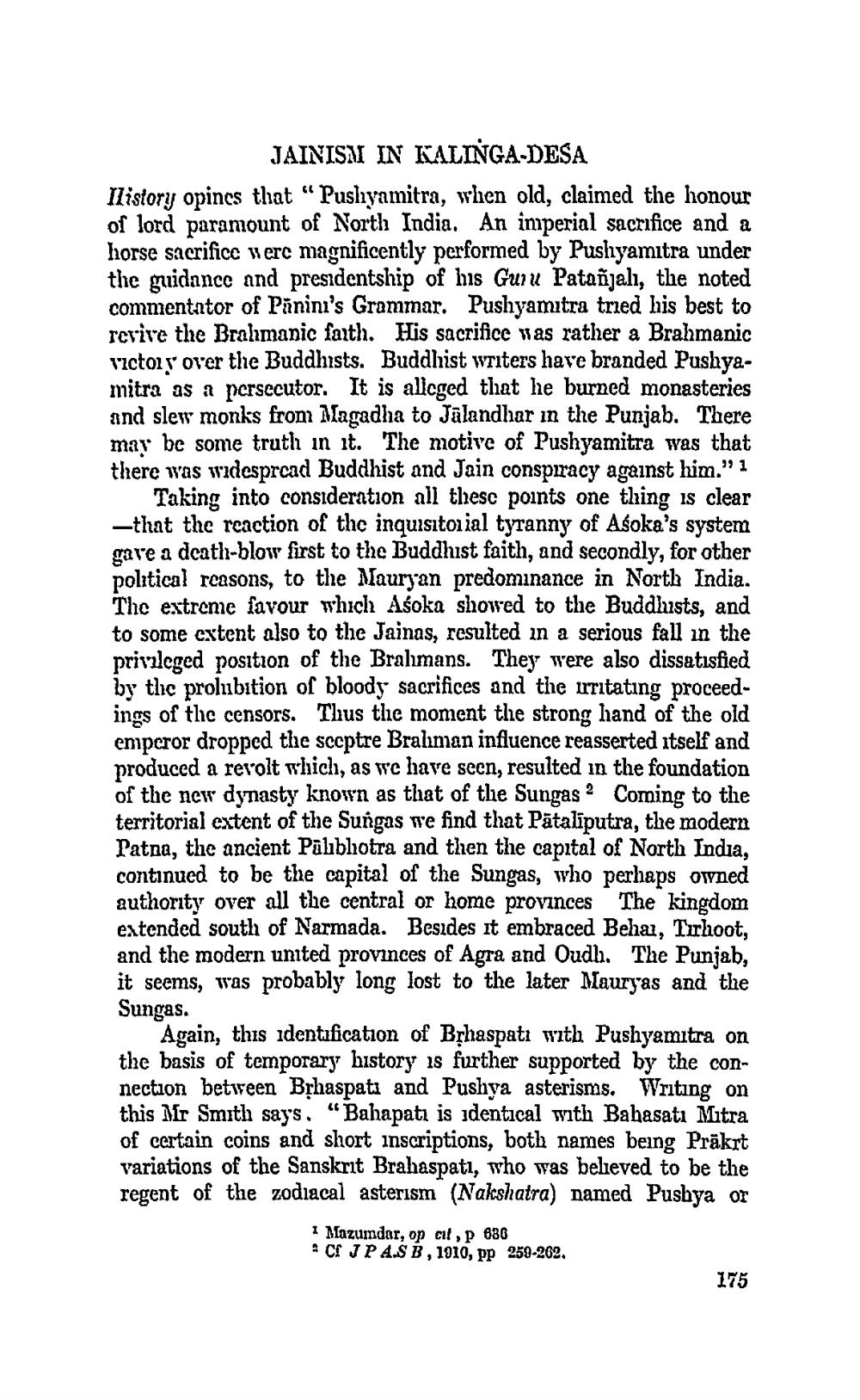________________ JAINISM IN KALINGA-DESA History opincs that "Pusliyamitra, when old, claimed the honour of lord paramount of North India. An inperial sacrifice and a horse sacrifice were magnificently performed by Pushyamitra under the guidance and presidentship of his Guru Patanjali, the noted commentator of Panini's Grammar. Pushyamitra tried his best to Terive the Brahmanic farth. His sacrifice was rather a Brahmanic victory over the Buddhists. Buddhist writers have branded Pushyamitra as a persecutor. It is alleged that he burned monasteries and slew monks from Magadha to Jalandhar in the Punjab. There may be some truth in it. The motive of Pushyamitra was that there was widesprcad Buddhist and Jain conspracy against him." 1 Taking into consideration all these points one thing is clear -that the reaction of thc inquisitorial tyranny of Asoka's system gave a death-blour first to the Buddhist faith, and secondly, for other political reasons, to the Mauryan predominance in North India. The extreme favour which Asoka showed to the Buddlusts, and to some extent also to the Jainas, resulted in a serious fall in the privileged position of the Bralimans. They were also dissatisfied by the prolibition of bloody sacrifices and the irritating proceedings of the censors. Thus the moment the strong hand of the old emperor dropped the sceptre Braliman influence reasserted itself and produced a revolt wlich, as we have seen, resulted in the foundation of the new dynasty known as that of the Sungas 2 Coming to the territorial extent of the Sungas we find that Pataliputra, the modern Patna, the ancient Palibhotra and then the capital of North India, continued to be the capital of the Sungas, who perhaps owned authority over all the central or home provinces The kingdom extended south of Narmada. Besides it embraced Beha, Tyrhoot, and the modern united provinces of Agra and Oudh. The Punjab, it seems, was probably long lost to the later Mauryas and the Sungas. Again, this identification of Bphaspati with Pushyamitra on the basis of temporary history is further supported by the connection between Bphaspata and Pushya asterisms. Writing on this Mr Smith says, "Bahapati is identical with Bahasati Mitra of certain coins and short inscriptions, both names being Prakrt variations of the Sanskrit Brahaspati, who was believed to be the regent of the zodiacal asterism (Nakshatra) named Pushya or 1 Mazumdar, op cit, 680 CE JPA.SB, 1910, pp 259-202. 175




